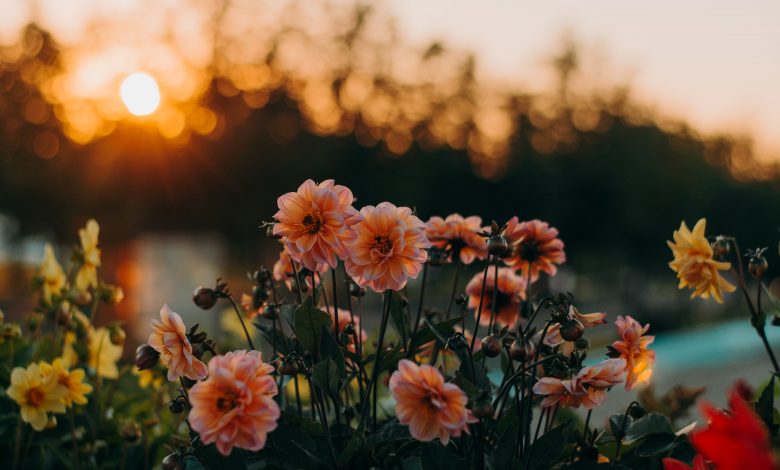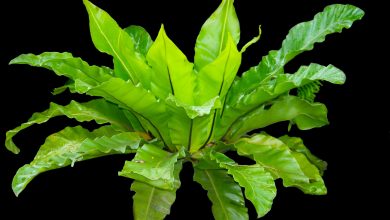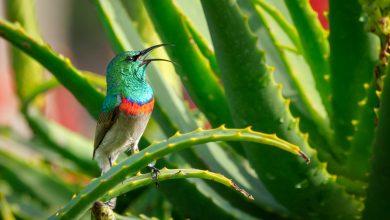What Is the Difference Between Annual, Biennial, and Perennial Plants?

Gardening can be a real handful of a hobby. It’s full of complicated terminology, methods, and information that can be really overwhelming to somebody just starting out. Not only do you have to contend with the differences in tools and soil, but you need to familiarize yourself with different aspects of lighting and the yearly calendar cycle.
It can get quite scientific at times, with many of the more enthusiastic gardeners being able to tell you all about alkaline and acidic conditions, how to work around the first and last frost, and where and how to place your plants for maximum effect depending on the zone you live in.
The learning curve doesn’t stop there though. The most difficult part of first getting into gardening is still to come, and that is the difference between the plant types, which is determined by the life cycle of the plant. There are three main categories you need to be aware of: annuals, with a one-year cycle; biennials, with a two-year cycle; and perennial, with a three-year cycle.
What type each plant is determines how long it lives for and how you need to maintain it, so it’s vital that you understand, at the very least, the fundamental differences between the three.
Annuals
First up is annuals. This particular category is arguably the most common type of flower, although it’s not the most popular.
As the name implies, annuals are all about working around the yearly cycle of the plant, which just so happens to sync up with the plant’s life cycle too. This type of flower finishes up its life cycle after one year, when it then needs to start again.
You can do this either straight from seeds or from cuttings of a previous lot of flowers. You would usually plant each new batch just after the last frost in spring, but many choose to wait just a bit longer to stay on the safe side.
This type of plant requires a fair bit more effort than the other two, purely because you need to start the whole process again after each year. For many hobby gardeners, that isn’t a problem, but for those among us who just want a nice-looking garden, it can be a bit bothersome.
That being said, it is usually worth the effort, as some of the world’s nicer looking flowers just so happen to be annuals. These flowers include:

Marigolds
Marigolds are a gorgeous looking flower that is well worth the effort needed to grow it year after year. It has a beautiful golden bronze color hue to it, and the flowers themselves grow in large bundles and remain quite small and dainty, meaning you end up with a field of golden sunshine, to be a bit poetic.
Larkspur
Larkspur is a sultry looking purple flower. It’s a bit like an orchid, except not as showy, with a shape more resembling lavender but with flowerheads instead. However, this intimate flower needs a fair bit more effort than others to get it started – even more so than its annual brothers and sisters.
The issue is that larkspur needs a particularly cold period before it can actually germinate. You can do this before you plant the seeds, after you already put them in a pot, or even if you make the mistake of sticking them in the ground. However, you’re just making life more difficult for yourself if you do this before exposing them to the cold.
By far the easiest method, and the most common, is to use your fridge. Whack some damp perlite into a zip lock bag to provide some moisture, and throw the seeds in with it. Zip the bag up, and place it in the refrigerator. Leave it in there for at least two weeks, and then you should be all good to go.
If you have planted them in a pot before that, then all hope is not lost. If you have a cellar or cold room that is between 40 and 50 degrees Fahrenheit, then you can leave them there for two weeks too. If that’s not a condition that’s available to you or you have warm weather and the seeds are already in the ground, then I’m afraid you are out of luck.
The work doesn’t end there though. The seedlings then need to be thinned to allow each flower to fully grow and develop. So only undertake the task of growing this beauty if you are up to the challenge and have the energy required to see it through.
Nasturtium
Nasturtium has a lovely, cutesy little flowerhead, and you can eat it too, although it’s not particularly tasty. Not only does the flower grow easily and quickly, but it also has a whole bunch of uses. It looks great, so you can use it as ground cover or as a standard garden plant. It also has a lovely aroma, making it a great choice for cutting. It’s also a decent choice for a potted plant, especially as a first flower project with the kids.
You need to be starting your seeds indoors about five weeks before your last frost date. You can do it later, but that’s how to get the most bang for your buck. The flower needs well-drained soil and needs to be kept moist. The most demanding part of growing the flower, though, is that it needs the full sun to bloom effectively.
The flower also doesn’t like fertilizer, so you don’t have to worry about that at all. You may need to trim it a bit or cut off dead leaves and stems during the growing season, but that’s it as far as maintenance goes.
Cosmos
If you’ve ever looked at a picture of the universe, then at a picture of a field of cosmos, you would realize just how well named this flower is. It comes in many different colors, one being a gorgeous violet and white hue.
However, surprisingly enough, that’s not why these were named cosmos. The flower was named this by Spanish priests due to the orderly nature of its petals, which the definition of cosmos being the universe as an ordered whole matches up with.
It likes hot and dry conditions, with soil that is poor to average. In the majority of the United States, these are indeed annual. However, for the lucky few living in Zones 9 and 10, it can prove to be a perennial flower.
Strawflowers
Strawflowers are quite an interesting little plant. At first, you wouldn’t be too heavily chastised for thinking these are a bunch of thin, withered looking tan flowers, but that couldn’t be further from the truth. In reality, this species of flower can bring a bunch of color and light to your garden, provided you use them right.
This flower doesn’t actually have petals, despite its daisy-like appearance. What should be petals on it are papery and coarse and are actually a modified type of leaf called a bract.
In Zones 8 to 11, it can be a short-lived perennial, but for the rest of us, it is a traditional annual like any other. It likes a full sun, as well as rocky or sandy soil. Although, it can grow in almost any soil so long as there is decent drainage. It is very drought resistant; just don’t let it go too long without water.
Zinnia
Zinnias are one of the easiest and fastest-growing flowers you can have the pleasure of planting.
The flower can give you quick, bright bursts of color, making it perfect for a hassle-free summer garden. It has daisy-like flowerheads that each grow on a single stalk, which makes them a great cutting choice.
There are a variety of different types of zinnia available, the main difference being how many petals there are and how each one is arranged.
It doesn’t like being transplanted at all. So much so, in fact, that you are better off growing this one right from a seed in the garden bed. Give it some rich, well-drained soil and a full sun, and the flower can still grow strong and fast regardless.
Biennials
As you may have guessed, these are called biennials due to the fact that each flower has a two-year life cycle. This type of plant grows out its roots, leaves, and stem one year before going dormant during the winter. It then grows flowers and seeds in the second year.
Biennials can actually perform like perennials given the right environment. The seeds replace the plants that have died, and, in turn, new flowers then sprout from them.
Due to this, biennials are usually sold with perennials, and it can often be very hard to differentiate between the two.
Here are some examples:

Foxglove
As far as wildflowers go, foxglove is particularly eye-catching. This is, in no small part, thanks to the unusual shape and style of the plant. It has a large singular stalk, upon which several violet bell-shaped flowers grow and hang off of.
As a biennial, there are a few things you need to be aware of. Primarily, you are actually planting these flowers for the next year, not the year you plant them. So it requires quite a lot of foresight and planning ahead.
Foxglove is a hardy enough plant and can grow in nearly any condition you give it, so long as the soil isn’t too wet or too dry. Ideally, though, you want humus-rich soil and a fair bit of shade. The flower can mess up your garden if you don’t look after it, due to the fact that it is self-seeding. New plants sporting different arrays of flowers can pop up all around your garden if you don’t take care. To avoid this, keep on top of deadheading the flower.
Sweet William
Sweet William is one of those classic cottage flowers that you often see when walking through the various rural parts of the countryside. It is inherently old fashioned looking, with large bushes of circular red, pink, and white flowers. It isn’t exactly retro so much as it is old school, so make sure that it suits the style of your garden if you decide to use it.
It is great at attracting bees and other pollinators, so again it can make for a good companion plant. It can reseed, though, so be careful not to let it overrun your garden.
Sweet William is a bit pickier than its biennial counterparts. It likes the full sun, although it can tolerate some shade, and prefers its soil loose, well-drained, rich with nutrients, and slightly on the alkaline side. It is also a fan of fertilizers.
Hollyhock
On the other side of the old-fashioned scale, hollyhock is indeed more retro than old looking. It has a gorgeous vertical-style stem and flower pattern, and the petal arrangement just reminds you of the good old days.
It can come in a variety of colors, but to best make use of its distinct appearance, you should be planting these in pink.
This level of beauty doesn’t come easy, though. Hollyhock is fussy, and it needs full sun and a rich soil that is moist and well-drained.
Hollyhock can, in fact, live longer than the two years of a biennial with a bit of care and patience, although generally speaking, if you don’t allow it to seed, it shouldn’t.
Jade Plant
Also known as the money plant, the jade plant is a great example of an indoors biennial. It is a fairly old school plant that has traditionally been given as wedding gifts. The name of money plant is derived from its roots in feng shui from China.
The plant likes a fair bit of natural light and likes to be watered moderately. Don’t overdo it, but don’t let the plant suffer from drought either.
Aside from that, these plants are fairly easy to grow. Feed them every three or so months, and you should have a houseplant that lasts you as long as you want it to.
Perennials
This type is a bit more common than annuals, although most gardens have a healthy mix of both. Whereas annuals grow for one year before needing to be replanted and biennials grow for two, perennials can grow for over three, provided the weather or wildlife doesn’t get to them first. Flowers of this type are capable of coming back each year on its own, with little to no human interference, making them the perfect choice for gardeners with little time on their hands.
You may have heard the term evergreen before. In truth, the majority of these evergreen plants are, in fact, perennials. The name is given to the type of flower that maintains its foliage throughout winter, so it is always sprouting a bit of greenery.
There are a million and one different types of perennial plants out there, but here are some of the most common:

Black-Eyed Susans
Black-eyed Susans are one of the most popular perennial wildflowers grown in America today. The naming is quite appropriate, given that the flower is commonly yellow, with a big black center proudly on display from between the petals.
They attract pollinators, so even if you aren’t too big on the appearance of the flowers, they can have some use in your garden.
It’s worth noting that black-eyed Susans are extremely territorial, and can stomp out other flowers growing near it. So be careful if you decide not to isolate them and instead plant them near other plants.
Plant the seeds in well-drained and moist soil, ideally in the full sun. Although, the flowers can grow in partial sun if needs be, as they can grow in non-ideal conditions if needs be. You don’t need to water them too much; just keep an eye on your plot and make sure that the soil doesn’t dry out.
Purple Cornflowers
This flower is unusual in appearance, although it has a quirky charm to it. It is a great attractor for pollinators like bees and butterflies, making it a decent companion plant to litter your garden with.
To grow these, you should be planting them in a plot of poor-quality soil that gets at least six hours of full sun every day. It is a hardy plant that can thrive in harsh and dry summers, so long as you don’t let it go too long without water.
Coreopsis
Coreopsis can, in truth, come in both the annual and perennial varieties. Although, the perennial is by far the more popular.
You can get them in a large array of different colors, from yellows and oranges to whites and reds. The centers of the flowers are often a strong dark brown, which results in some rather interesting looking contrasts.
These flowers like the full sun and prefer to be planted in early spring in un-amended soil. You can plant them straight into the ground to germinate if you wish; just be sure to water constantly during this process.
After they have begun to grow, coreopsis flowers need very little maintenance. Water them occasionally during long droughts and deadhead and trim as needed, and the flower should bloom perfectly well for you.
Daylilies
Daylilies are a proper dainty looking little retro plant. With gorgeous, flourishing yellow flowerheads, this flower can brighten up even the grayest of gardens.
It has quite the appropriate name, as the flower opens up during the day, and retracts into itself during the nighttime.
It is a particularly easy to grow flower and requires virtually no attention from you after it’s sprouted. It can thrive in a wide range of different soil conditions, is immune to pests and disease, and continues to bloom for years on without any help or assistance.
Ideally, you should be planting daylilies in well-drained, moist soil, with at least six hours of full sun per day, and some afternoon shade. Although, as mentioned, they can tolerate pretty much any condition you put it under, within reason. They don’t need fertilizer, with the exception of a yearly composting, and can be planted anytime from spring through fall.
Goldenrod
Goldenrod is a controversial addition to a list of flowers. While some people argue that it is indeed a flower, specifically, a type of wildflower, others argue that it is a weed. In truth, there is no definite as to what it is or isn’t, and whether or not you want to grow it is entirely your choice; don’t let yourself be dissuaded by other people. It’s your garden, after all.
The reason for the debate is largely due to the appearance of the flower. It has a weed-like structure, with a large messy head of yellow flowers. While it may resemble a weed in some ways, it is still a very nice-looking flower when used in moderation.
Although, the flower does come with a warning. If you suffer from hay fever or fall allergies, steer well clear of this one, as its pollen count is off the charts.
The plant prefers well-drained, poor quality soil with plenty of sunlight, but you need to be aware that due to the flower’s likeness to a weed, it can be extremely aggressive.



